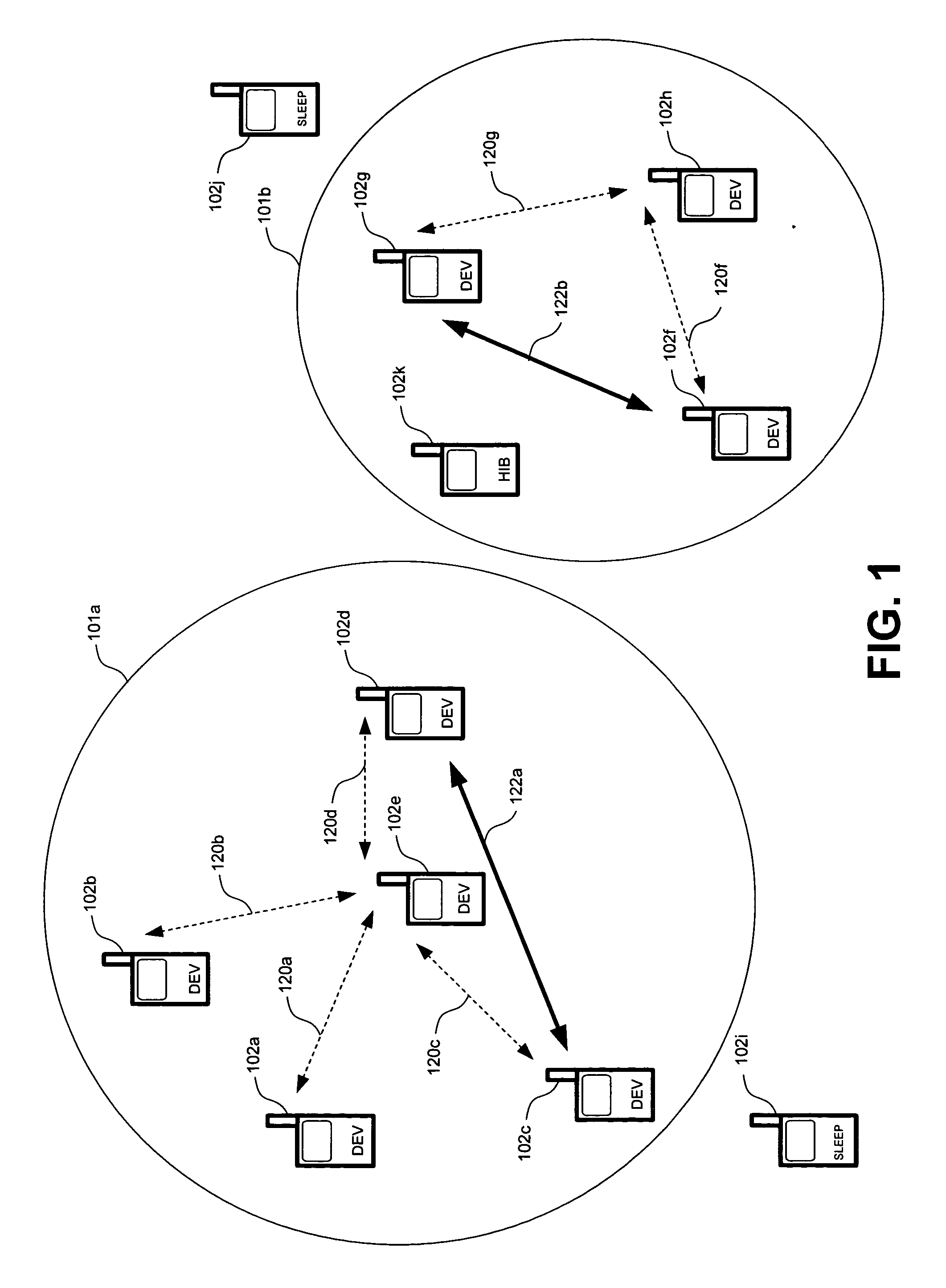Embedding secondary transmissions in an existing wireless communications network
a secondary transmission and wireless communication technology, applied in the field of wireless communication, can solve the problems of troublesome communication when waking up a device from sleep mode to initiate communication, the highest power consumption of a hibernating device in the active mode, and the problem of affecting the participation of the remote wireless communication devi
- Summary
- Abstract
- Description
- Claims
- Application Information
AI Technical Summary
Benefits of technology
Problems solved by technology
Method used
Image
Examples
Embodiment Construction
I. Operational Environment
[0027] Before describing the invention in detail, it is first helpful to describe an environment in which the present invention may be employed. Accordingly, FIG. 1 is a diagram of an exemplary operational environment. This environment includes multiple beaconing groups 101, each having a plurality of devices 102. For instance, FIG. 1 shows a beaconing group 101a, which includes member devices (DEVs) 102a-e. FIG. 1 also shows a beaconing group 101b, which includes DEVs 102f, 102g, 102h, and 102k (device 102k is operating in a hibernating mode).
[0028] In beaconing group 101a, each of DEVs 102a-d may communicate with DEV 102e across a corresponding link 120. For instance, FIG. 1 shows DEV 102a communicating with DEV 102e across a link 120a. In addition, in beaconing group 101a, each of devices 102a-e may communicate with each other directly. For instance, FIG. 1 shows DEVs 102c and 102d communicating via a direct link 122a.
[0029] In beaconing group 101b, ea...
PUM
 Login to View More
Login to View More Abstract
Description
Claims
Application Information
 Login to View More
Login to View More - R&D
- Intellectual Property
- Life Sciences
- Materials
- Tech Scout
- Unparalleled Data Quality
- Higher Quality Content
- 60% Fewer Hallucinations
Browse by: Latest US Patents, China's latest patents, Technical Efficacy Thesaurus, Application Domain, Technology Topic, Popular Technical Reports.
© 2025 PatSnap. All rights reserved.Legal|Privacy policy|Modern Slavery Act Transparency Statement|Sitemap|About US| Contact US: help@patsnap.com



